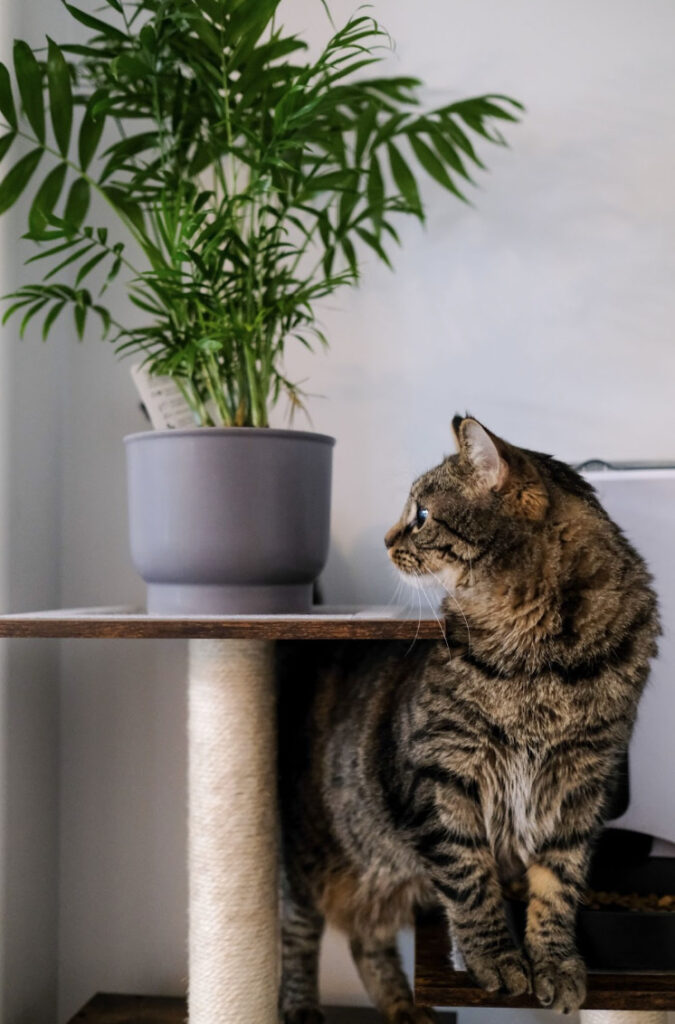Do you love the idea of bringing the outdoors into your home? You’re not alone! House plants have become a popular way to add a touch of nature to our living spaces.
They look beautiful and can even help keep the air clean. But did you know that not all house plants are safe for our furry friends?
Keep reading as we explore some stunning house plants that might be harmful to your pets and how you can create a safe indoor jungle for both your plants and your animals.
Why Houseplants?
If they’re so deadly you might wonder why you would want to keep any houseplants in your home at all.
There’s several reasons, actually.
They can instantly make any space feel cozier and more inviting. Also, not only do they add beauty, they have the power to improve air quality, and they boost our mood.
Hidden Dangers Lurking in Plain Sight
Unfortunately, while many house plants are harmless, some can be toxic to our furry companions. That means that while a plant may look stunning on your windowsill, it could pose a danger to your pets if they decide to take a nibble. It’s essential to be aware of these potential hazards so that you can make informed choices about the plants you bring into your home.
Beautiful Yet Toxic: Common Culprits
Let’s shine a spotlight on some of the gorgeous but hazardous house plants you should be cautious about:
Lilies
Photo by Doug Kelley on Unsplash
Lilies come in various species and are known for their elegant, trumpet-shaped flowers. However, these flowers can be extremely dangerous to cats if ingested. Even a small nibble can lead to severe health issues.
Dieffenbachia
Photo by ANKUR MADAN on Unsplash
With its striking foliage and unique patterns, dieffenbachia is a popular choice for indoor decor. But this plant contains toxins that can be harmful if your pets decide to chew on its leaves.
Pothos
Pothos is a versatile and easy-to-care-for plant, making it a common choice for homes. However, it’s important to keep it out of your pet’s reach, as it can cause vomiting and other health problems if ingested.
Sago Palm
Photo by Pavel Danilyuk: https://www.pexels.com/photo/close-up-shot-of-a-plant-9119623/
This palm boasts a striking appearance, but its seeds are highly toxic to pets. Ingesting even a small amount can be life-threatening.
Signs Your Pet Has Been Poisoned
It’s crucial to be aware of the signs of pet poisoning if you suspect your furry friend has come into contact with a toxic plant.
Keep an eye out for symptoms such as vomiting, diarrhea, lethargy, and difficulty breathing. If you notice any of these signs, don’t hesitate to reach out to your veterinarian for guidance.
Pet-Safe Alternatives
The good news is that you don’t have to give up on your dream of having beautiful indoor plants just because you have pets. There are plenty of pet-safe options that can add life to your home without putting your animals at risk.
Spider Plant
Photo by Alberto Nicoletta on Unsplash
This charming plant not only looks great but also helps purify the air. The best part? It’s safe for pets!
Boston Fern
Photo by Unknown Wong on Unsplash
If you’re a fan of lush, feathery foliage, the Boston fern is a fantastic choice. It’s non-toxic and adds a touch of elegance to any room.
Areca Palm
Create a tropical vibe with the areca palm. Its feathery fronds are visually appealing, and it won’t harm your furry companions.
Tips To a Safe Indoor Garden
Now that you know about the potential hazards and pet-safe alternatives, here are some tips for cultivating a safe indoor plant haven.
Placement
You can get rid of your toxic plants, or as an alternative, keep them out of your pet’s reach. Place them on high shelves or in areas that your furry friends can’t easily access.
Choosing Plants
Before bringing a new plant into your home, research whether it’s safe for pets. Look for lists of pet-friendly plants to ensure your choices are harmless.
Training
Train your pets to avoid chewing or playing with plants. Positive reinforcement and redirection can help keep both your plants and your pets safe.
You don’t have to give up all the benefits of greenery inside your home…you’ll just need to be more selective if you want both your plants and your pets to dwell together safely.
Remember, your pets rely on you to keep them safe and healthy, and with a little knowledge and care, you can enjoy the benefits of a lively indoor jungle without worry.
Air Purifiers vs Green Plants…Is One Better Than the Other


